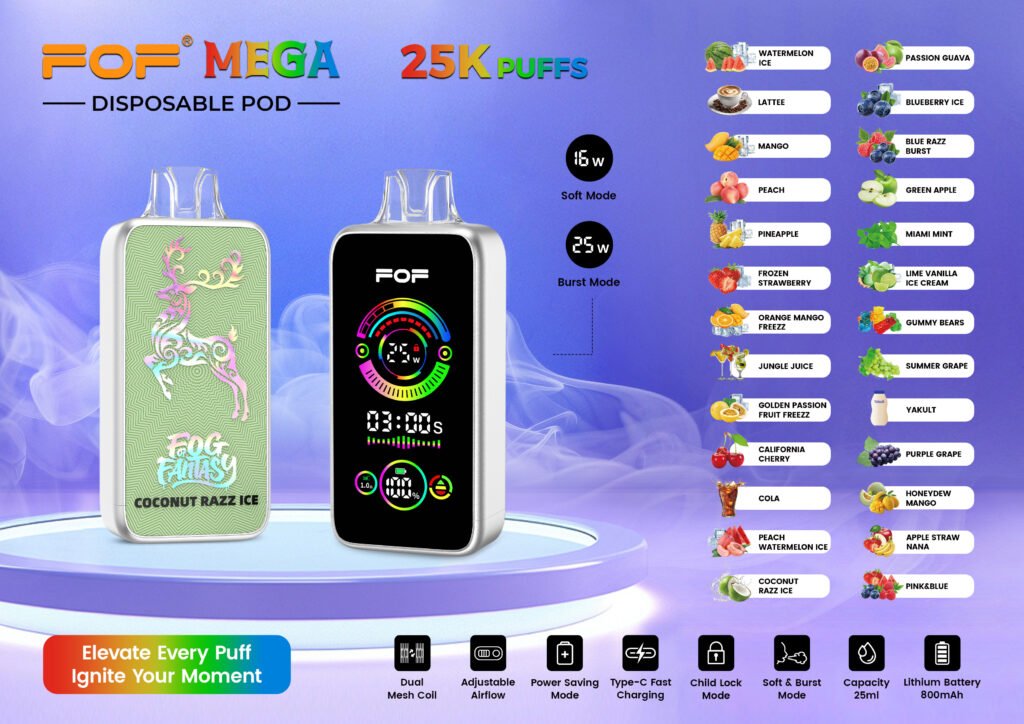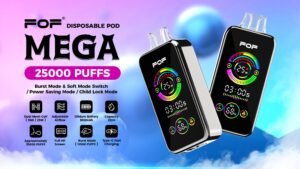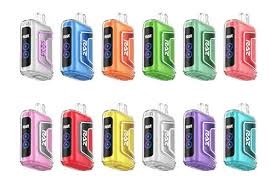After spending two decades in the vape manufacturing industry, I've watched disposable vapes transform from niche products to gas station staples. As someone who's supplied millions of devices to global distributors, I'm often asked whether these convenient options are worth buying.
Gas station vapes are typically limited to popular disposable brands like Elf Bar, Hyde, and FOF. While they offer convenience for emergency use, they often come with significant markups (40-60% over vape shop prices), potential authenticity concerns, limited selection, and no expert guidance. For regular users and businesses, specialized retailers or direct wholesale channels provide better value and reliability.
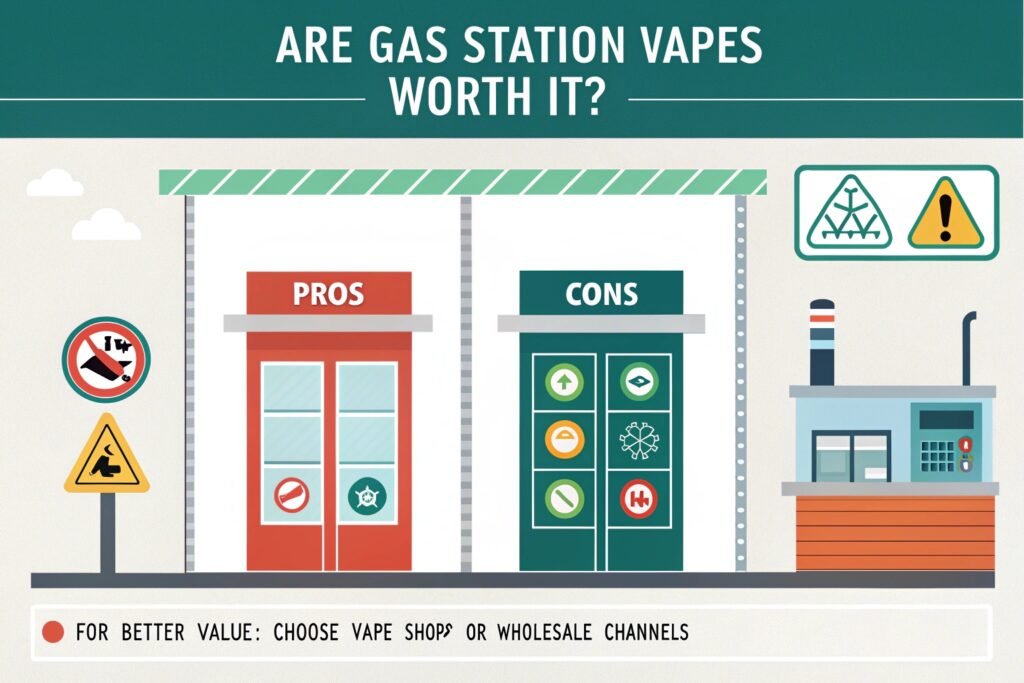
"Typical gas station vape selection behind counter"
Working with thousands of distributors across multiple continents has given me unique insights into the supply chain from factory to final point of sale. Let me share what you need to understand before grabbing that colorful disposable vape next to the energy drinks.
What Types of Vapes Do Gas Stations Actually Sell?
When I visit the U.S., I'm always curious about what vape products make it to gas station shelves. The selection patterns reveal a lot about consumer behavior and retail strategy.
Gas stations primarily stock single-use disposable vapes from mainstream brands, with limited flavor options and mid-range puff counts (typically 1,500-5,000 puffs), focusing on grab-and-go convenience over selection or value.
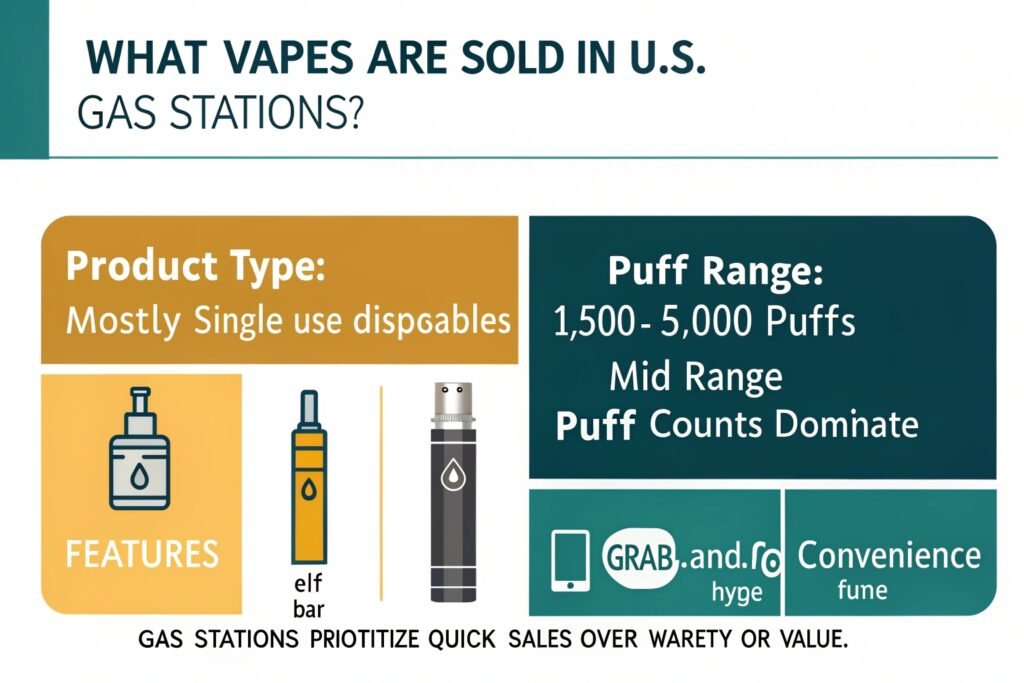
"Common disposable vape brands at gas stations"
Having manufactured vape products for both specialty shops and convenience retailers, I've observed clear differences in what gets stocked:
Typical Gas Station Vape Inventory
| Product Type | Availability | Common Brands | Price Range |
|---|---|---|---|
| Disposable Vapes1 | Very Common | Elf Bar, Hyde, Puff Bar, Fume | $12-25 |
| Pre-filled Pod Systems2 | Sometimes | JUUL, NJOY | $15-30 |
| Open Pod Systems3 | Rarely | Small selection if any | $20-35 |
| E-Liquid Bottles | Very Rare | Limited selection | $15-25 |
| Coils/Accessories | Almost Never | N/A | N/A |
During my factory tours with retail buyers, I often explain the business logic: gas stations prioritize products with:
- Low staff knowledge requirements
- Quick transaction times
- Minimal explanation needed
- Familiar brand recognition
- Long shelf life
This explains why complex devices or products requiring technical knowledge rarely make it to convenience store shelves. The staff simply isn't trained to explain the difference between mesh and ceramic coils or discuss optimal wattage settings.
Are You Getting Good Value at the Gas Station?
Having set pricing strategies for vape products across multiple markets, I'm acutely aware of the margins at each distribution stage. This perspective helps me assess whether convenience store pricing is reasonable.
Gas station vapes typically carry a 40-60% markup compared to vape shops and 300-500% over wholesale prices, with a standard 2000-puff disposable that costs $3-5 at wholesale often retailing for $15-20 at gas stations.
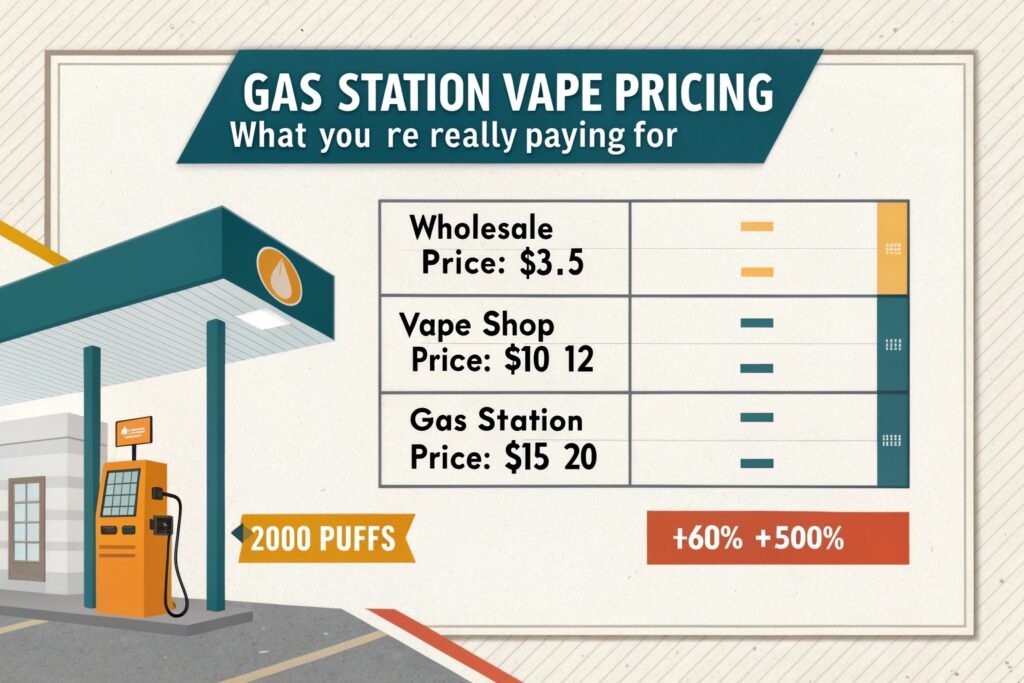
"Vape pricing comparison across different retail channels"
To put this in perspective, I'll break down the actual cost structure of a typical 2000-puff disposable vape:
Cost Breakdown of a Typical Disposable Vape4
| Stage | Approximate Cost | Markup |
|---|---|---|
| Factory Production5 | $2-3 | Base Cost |
| Wholesale Distributor6 | $3-6 | 50-100% |
| Vape Shop Retail | $8-15 | 100-150% |
| Gas Station Retail | $15-25 | 150-250% |
When I meet with distributors, I always emphasize understanding these margins. For end consumers, what you're paying for at a gas station isn't just the product—it's the convenience of immediate access.
This isn't necessarily bad. I've certainly paid $5 for a $1 bottle of water at an airport when I needed it. But making this your regular purchase strategy would be financially unwise for both casual users and certainly for anyone purchasing in volume.
The Hidden Risks: Authenticity and Quality Control
As someone who's worked with quality control teams in vape manufacturing, I've developed a sharp eye for counterfeit products. Gas stations present unique challenges in this area.
Gas stations often lack specialized knowledge to detect counterfeit vapes, with some surveys suggesting 15-20% of convenience store vapes may be unauthorized clones with questionable ingredients, battery safety, and quality control.
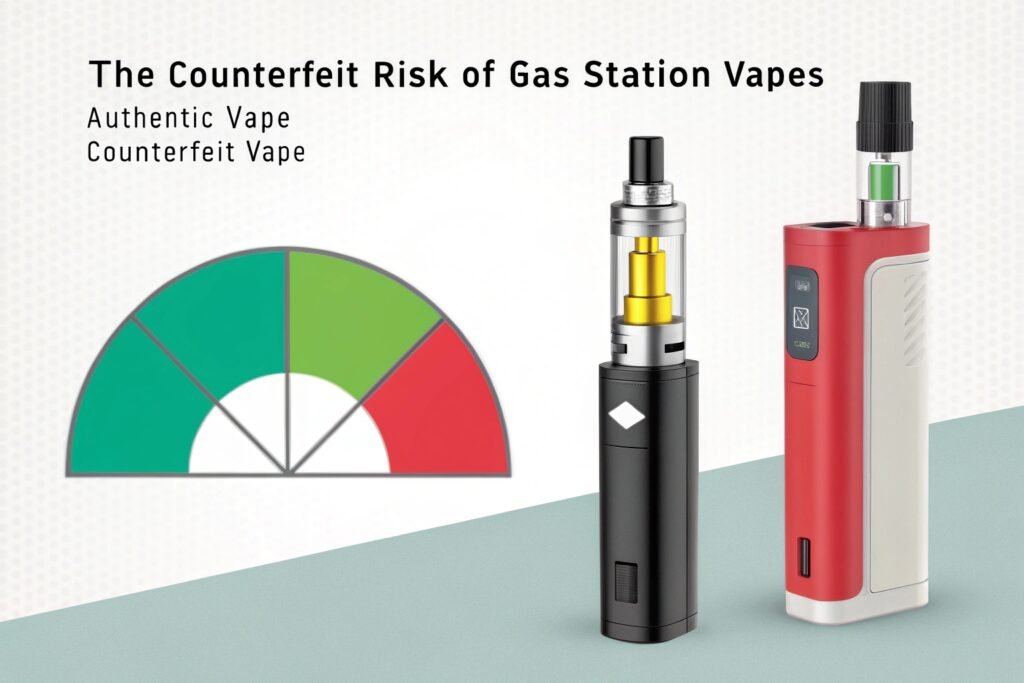
"How to spot fake vape packaging"
During my consulting work with retail chains, I've identified several factors that make gas stations vulnerable to counterfeit products7:
Why Counterfeits Reach Gas Station Shelves
- Non-Specialized Buyers: Purchasing agents may buy vapes alongside snacks and beverages, lacking specialized product knowledge
- Price Pressure: Seeking maximum margins, some retailers may choose lower-cost suppliers without proper verification
- Supply Chain Gaps: Products may pass through multiple distributors before reaching the store
- Limited Training: Staff rarely receive training on spotting authentic vs. fake products
- High Turnover: Both products and employees change frequently, limiting institutional knowledge
This creates real safety concerns. In our factory audits, we regularly test competitor products and have found alarming issues in counterfeits, including:
- Inconsistent nicotine levels (sometimes dramatically higher than labeled)
- Contaminated e-liquids with impurities
- Substandard battery cells prone to overheating
- Missing safety circuits that prevent overcharging
- Leaking pods that can release e-liquid into the mouth
For consumers, I recommend these authentication steps8 before purchasing:
- Check for authentication codes and verify them on the official website
- Examine packaging quality (counterfeits often have blurry text or misaligned graphics)
- Verify the product weight (authentic products have consistent weight)
- Look for proper regulatory markings appropriate to your region
- Check production dates and batch numbers
What About Safety Regulations and Compliance?
Having navigated vape regulations across dozens of countries, I'm intimately familiar with the complexities of legal compliance in this industry.
Gas stations frequently sell vapes that may not comply with the latest FDA regulations, as convenience stores typically lack dedicated staff monitoring the rapidly changing vape regulatory landscape.
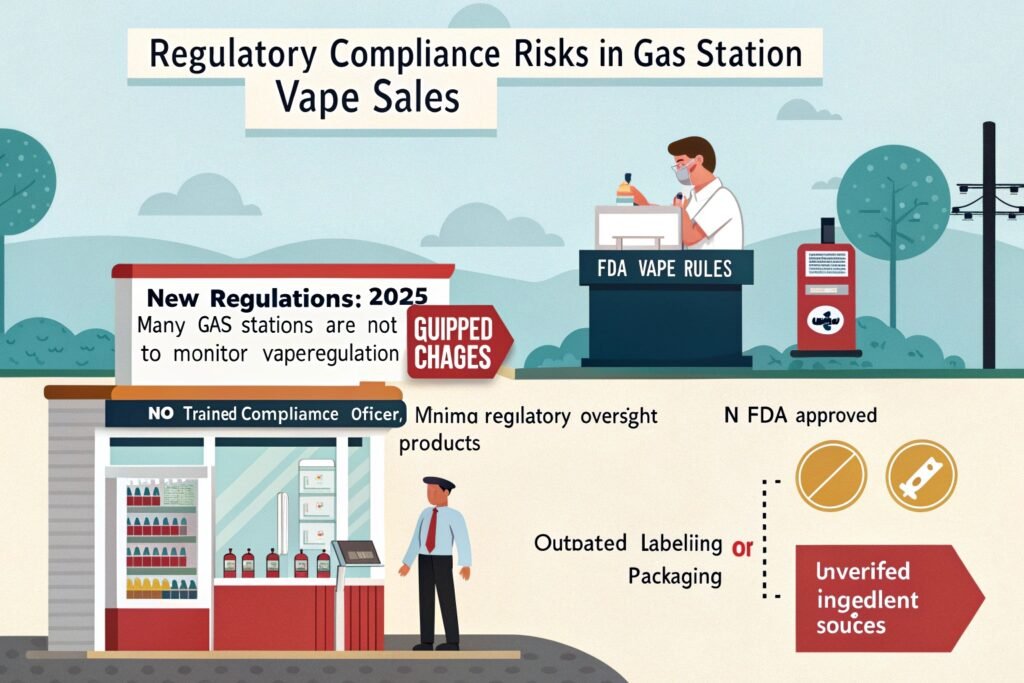
"FDA compliance warning labels on vape packaging"
The vape regulatory environment9 is particularly challenging in the U.S., where:
Current U.S. Regulatory Landscape
- The FDA requires PMTA (Premarket Tobacco Application) approval10 for all vape products
- Many disposable brands on the market have not received full approval
- Enforcement is inconsistent, creating confusion among retailers
- State and local regulations may add additional restrictions
- Flavor bans exist in several states and municipalities
When I advise distributors entering the U.S. market, I emphasize that legal compliance isn't just about avoiding fines—it's about consumer safety and business sustainability11. Gas stations, focused on numerous product categories, rarely have the bandwidth to track these complex regulations.
For consumers, this creates a situation where the legality of a product may be uncertain. A product available at your local gas station may technically be non-compliant with current regulations, even if it's openly sold.
Who Should Buy Gas Station Vapes (And Who Shouldn't)?
Based on my experience working with different customer segments across the vape industry, I can identify clear use cases for gas station purchases.
Gas station vapes are suitable for emergency situations, travelers who forgot their regular device, or first-time users wanting a low-commitment trial, but not ideal for regular vapers seeking value or businesses needing consistent quality.
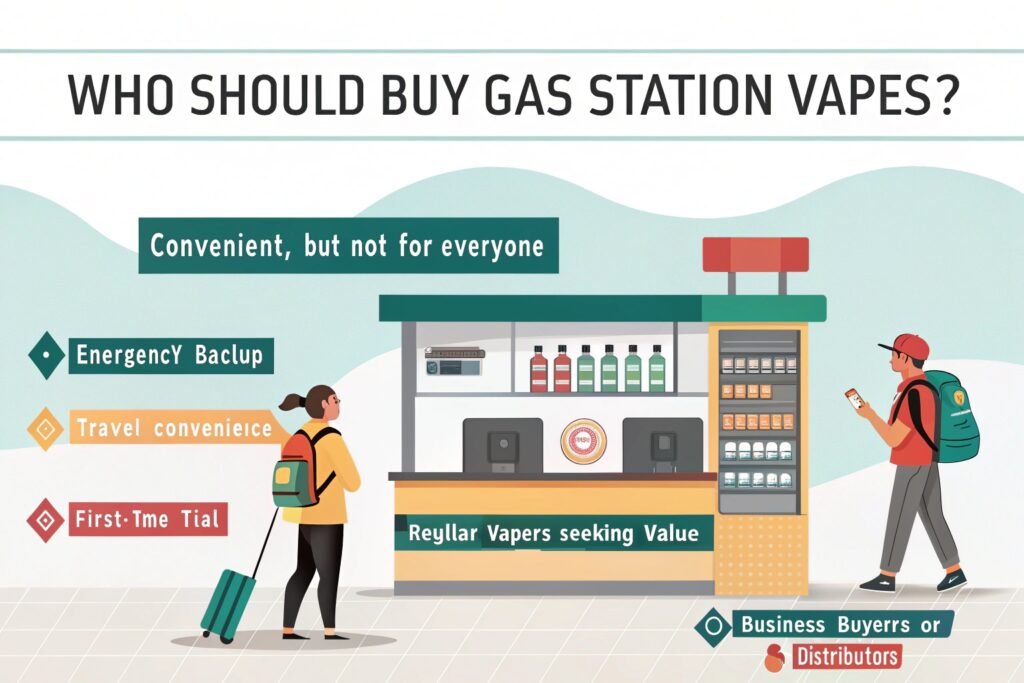
"Different types of vape customers"
Ideal Use Cases for Gas Station Vapes
- Emergency Replacement12: When your main device breaks or runs out of battery
- Travel Convenience: When you're away from your usual suppliers
- Occasional Use: For social or situational vapers who use very infrequently
- Trial Purposes13: First-timers wanting to experiment without significant investment
Poor Use Cases for Gas Station Vapes
- Regular Daily Users: The cost premium makes this financially inefficient
- Distributors/Resellers: Margins are severely compressed when buying at retail
- Flavor Enthusiasts: Limited selection and often older stock affect flavor quality
- Health-Conscious Users14: Limited ability to verify product authenticity and ingredients
- Budget-Sensitive Buyers: Paying significant premiums for convenience
When I consult with business clients, I always stress understanding their customer base. If you're a distributor serving consumers who regularly buy from gas stations, you have a clear opportunity to offer better value and education about the benefits of dedicated vape sources.
Better Alternatives for Different User Types
After helping thousands of clients optimize their vape purchasing strategies, I've developed clear recommendations for alternatives to gas station vapes.
For regular users, dedicated vape shops offer better value, selection and expertise; for businesses, establishing direct relationships with manufacturers or authorized distributors ensures authenticity, competitive pricing, and consistent inventory.
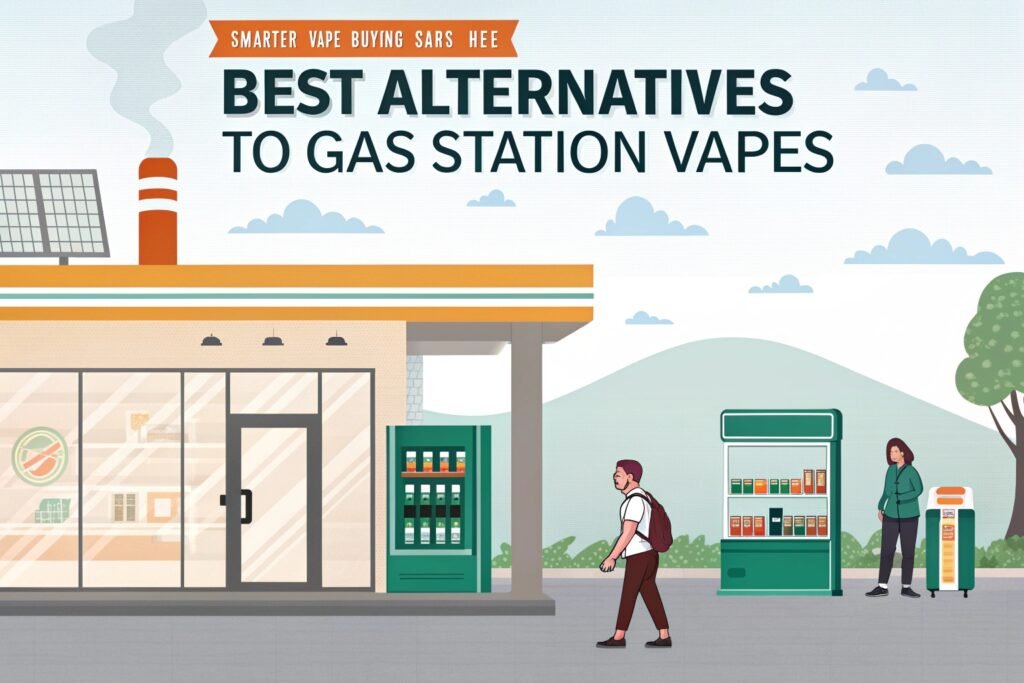
"Better alternatives to gas station vapes"
For Individual Users
If you're currently buying vapes from gas stations, consider:
- Local Vape Shops15: Better pricing, expert advice, product guarantees, and wider selection
- Online Retailers: Competitive pricing, user reviews, and doorstep delivery
- Subscription Services: Regular delivery of products at consistent pricing
- Rechargeable Systems: Higher upfront cost but significantly lower per-use expense
For Business Buyers
If you're purchasing for resale:
- Factory-Direct Relationships16: Eliminate middleman markups and ensure authenticity
- Authorized Distributors: Guaranteed genuine products with proper documentation
- Custom/White-Label Options: Differentiate your offering with branded products
- Bulk Purchasing17: Leverage volume discounts unavailable at retail
During my years running production lines, I've seen the dramatic price differences between factory-direct and retail channels. For businesses particularly, the difference can determine profitability in this competitive market.
How to Identify Quality Products (Even at Gas Stations)
Even when convenience is your priority, you can make smarter purchasing decisions with the right knowledge.
When buying from gas stations, look for tamper-evident packaging, verification codes you can check on the spot, established brand names, manufacturing dates within the last 3-6 months, and proper regulatory markings.
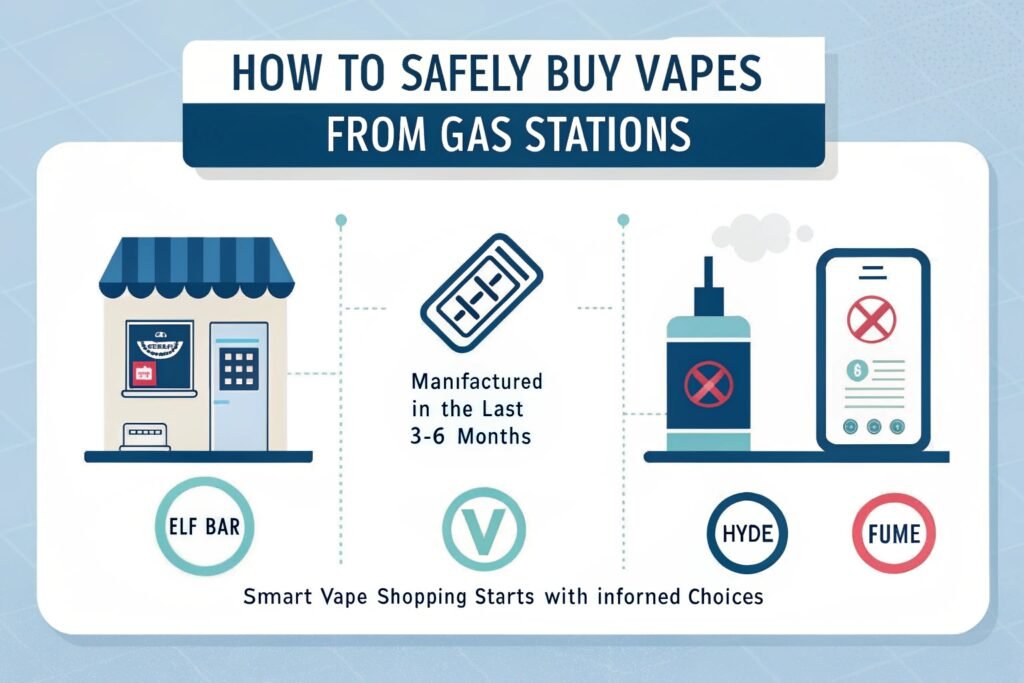
"How to check vape quality before buying"
From my quality control experience, here's a quick checklist I recommend:
Pre-Purchase Quality Check
- Packaging Integrity: Look for sealed, undamaged packaging with clear labeling
- Authentication Methods: Scan QR codes or check serial numbers before purchasing
- Expiration Dates: E-liquids have shelf lives; check for manufacturing/expiration information
- Battery Indicators: Quality devices have battery level indicators and proper charging ports
- Weight Test: Authentic products have consistent weight; counterfeits often feel lighter
- Brand Reputation: Research the brand quickly on your phone before purchasing
- Visual Inspection: Check for e-liquid color consistency and clarity through transparent sections
If the gas station clerk seems annoyed at your careful inspection, remember that you're putting unknown substances into your body—you have every right to verify what you're purchasing.
The Business Opportunity: Serving the Convenience Market Better
For my distributor clients reading this article, I see a clear business opportunity in this situation.
The gap between gas station offerings and consumer needs creates a market opportunity for distributors who can provide convenience without sacrificing quality, authenticity, or value.
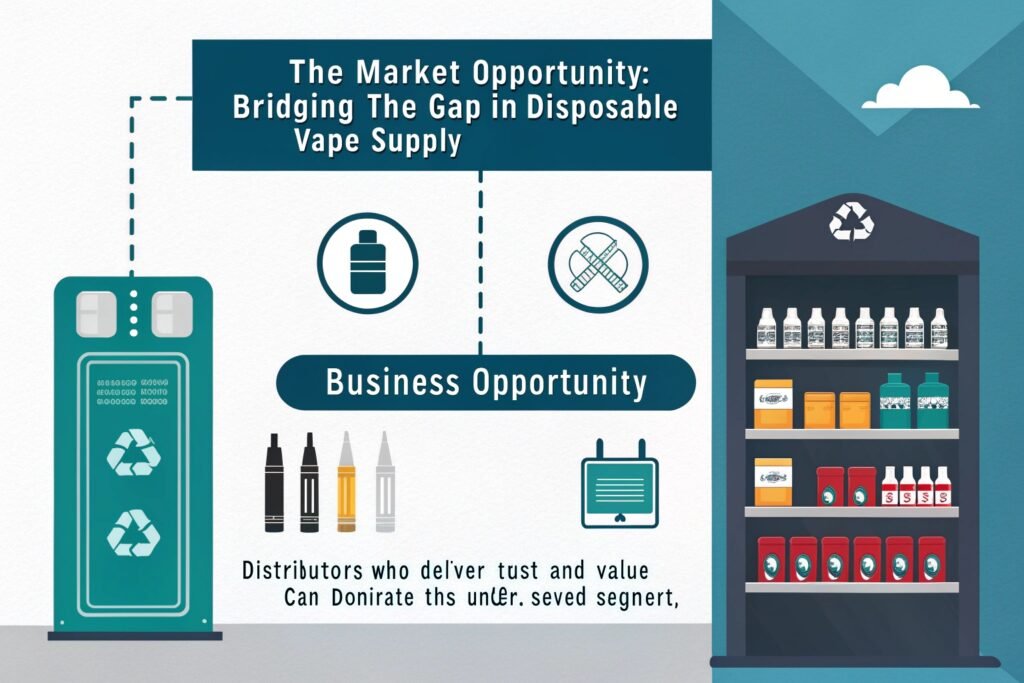
"Vape business opportunity in the convenience market"
In my consulting work, I recommend several strategies:
Market Gap Strategies
- Vending Solutions: Automated vape sales with age verification in convenient locations
- Mobile Retail: Pop-up shops or delivery services combining convenience with expertise
- Convenience Store Partnerships: Training programs and authentication guarantees
- Educational Marketing: Helping consumers understand the value difference
- Strategic Pricing: Finding the sweet spot between gas station premiums and vape shop discounts
One distributor I worked with in Texas increased their sales by 300% by placing small, curated vape displays in convenience stores with proper staff training and authentication measures. They found the perfect balance between convenience and quality.
Conclusion
Gas station vapes serve a clear purpose in the market—emergency access and convenience. For occasional use or when you're in a pinch, they're a reasonable option despite the premium pricing.
However, for regular users or businesses, they represent poor value and unnecessary risk. By understanding the supply chain, quality concerns, and pricing structure, you can make more informed decisions about when and where to purchase vape products.
Whether you're an individual user looking for better options or a business seeking to serve this market more effectively, the key is education and establishing reliable supply relationships that balance convenience with quality and value.
-
Explore this link to discover top disposable vape brands, helping you understand market trends and consumer preferences. ↩
-
Learn about the benefits of pre-filled pod systems, which can enhance your vaping experience and inform your purchasing decisions. ↩
-
This resource will clarify the differences between open and closed pod systems, aiding in your understanding of vaping options. ↩
-
Understanding the cost breakdown can help consumers make informed decisions about their purchases and avoid overpaying. ↩
-
Exploring factory production costs can provide insights into pricing strategies and profit margins in the vape industry. ↩
-
Learning about wholesale pricing can help retailers and consumers understand the supply chain and potential savings. ↩
-
Understanding the risks associated with counterfeit products can help consumers make safer choices and protect their health. ↩
-
Learning about authentication steps can empower consumers to avoid counterfeit products and ensure their safety. ↩
-
Exploring the regulatory environment helps businesses navigate compliance and avoid legal pitfalls in the vape market. ↩
-
Understanding PMTA is crucial for compliance in the vape industry, ensuring safety and legality in product offerings. ↩
-
This link will provide insights on balancing safety and sustainability, essential for long-term success in the vape market. ↩
-
Explore this link to discover reliable emergency replacement vapes that can save your vaping experience when your main device fails. ↩
-
Check out this resource to find beginner-friendly vapes perfect for trial purposes without a hefty investment. ↩
-
This link provides essential information for health-conscious users to make informed decisions about vaping products and their safety. ↩
-
Explore the advantages of local vape shops for better pricing and expert advice, enhancing your vaping experience. ↩
-
Learn how factory-direct relationships can eliminate markups and ensure product authenticity, crucial for business success. ↩
-
Discover how bulk purchasing can lead to significant savings and better profit margins for your business. ↩

